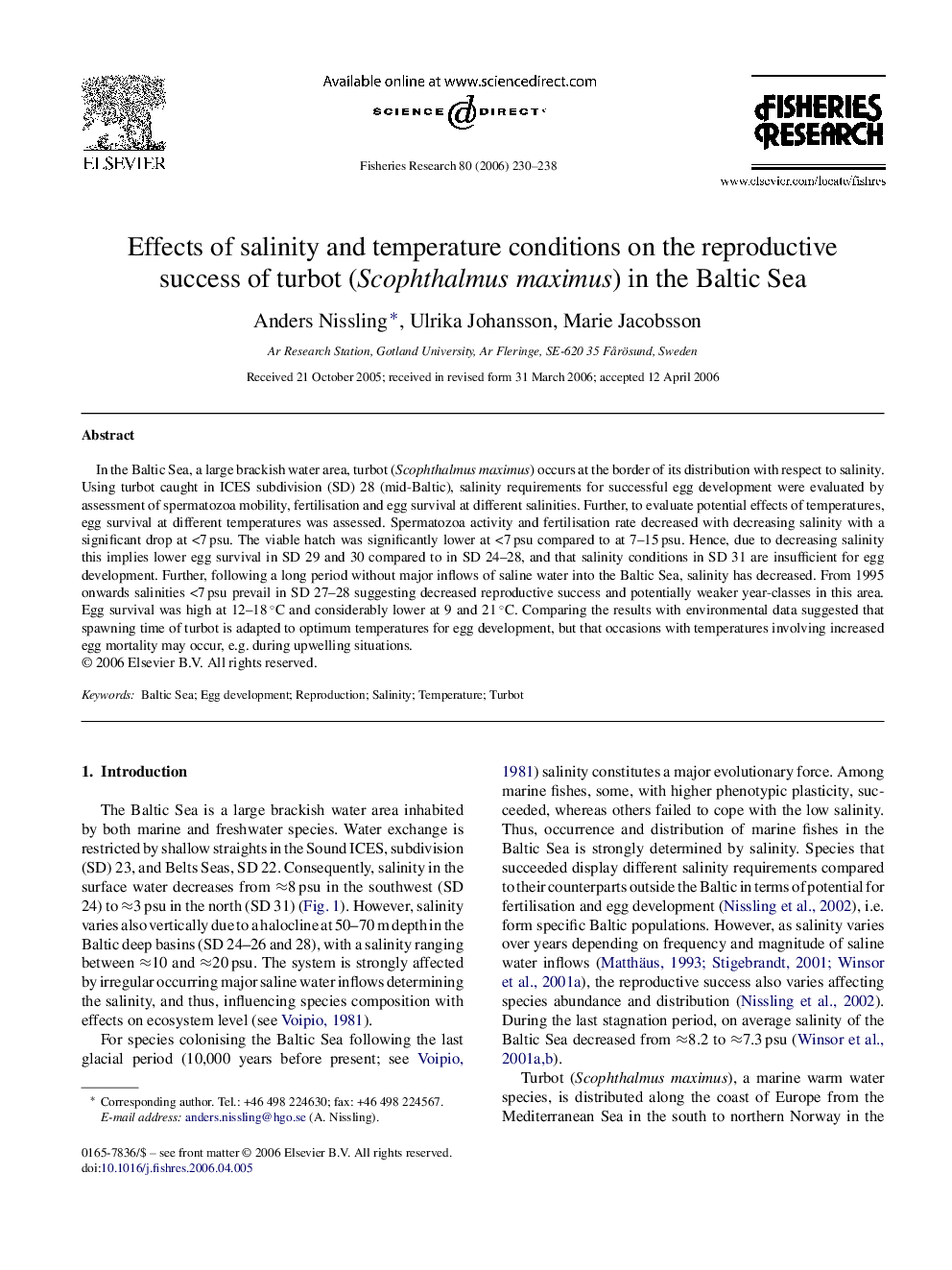| کد مقاله | کد نشریه | سال انتشار | مقاله انگلیسی | نسخه تمام متن |
|---|---|---|---|---|
| 4544725 | 1626869 | 2006 | 9 صفحه PDF | دانلود رایگان |

In the Baltic Sea, a large brackish water area, turbot (Scophthalmus maximus) occurs at the border of its distribution with respect to salinity. Using turbot caught in ICES subdivision (SD) 28 (mid-Baltic), salinity requirements for successful egg development were evaluated by assessment of spermatozoa mobility, fertilisation and egg survival at different salinities. Further, to evaluate potential effects of temperatures, egg survival at different temperatures was assessed. Spermatozoa activity and fertilisation rate decreased with decreasing salinity with a significant drop at <7 psu. The viable hatch was significantly lower at <7 psu compared to at 7–15 psu. Hence, due to decreasing salinity this implies lower egg survival in SD 29 and 30 compared to in SD 24–28, and that salinity conditions in SD 31 are insufficient for egg development. Further, following a long period without major inflows of saline water into the Baltic Sea, salinity has decreased. From 1995 onwards salinities <7 psu prevail in SD 27–28 suggesting decreased reproductive success and potentially weaker year-classes in this area. Egg survival was high at 12–18 °C and considerably lower at 9 and 21 °C. Comparing the results with environmental data suggested that spawning time of turbot is adapted to optimum temperatures for egg development, but that occasions with temperatures involving increased egg mortality may occur, e.g. during upwelling situations.
Journal: Fisheries Research - Volume 80, Issues 2–3, September 2006, Pages 230–238